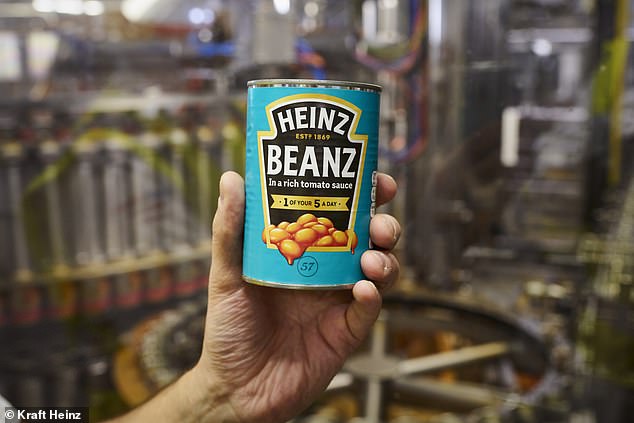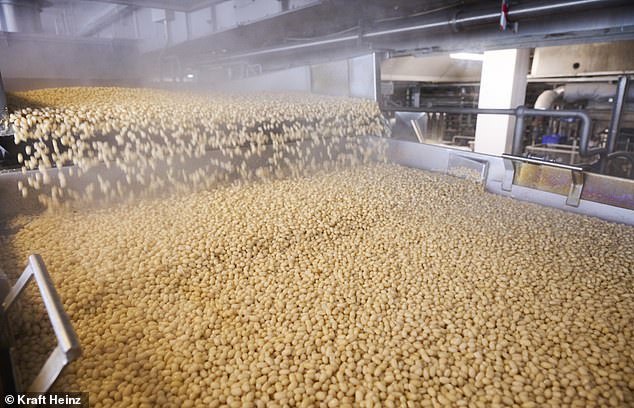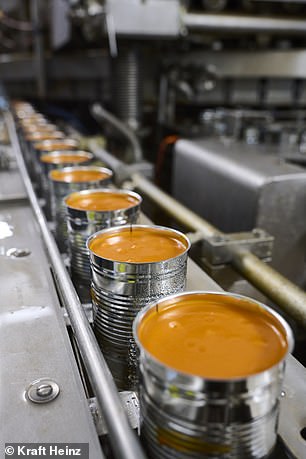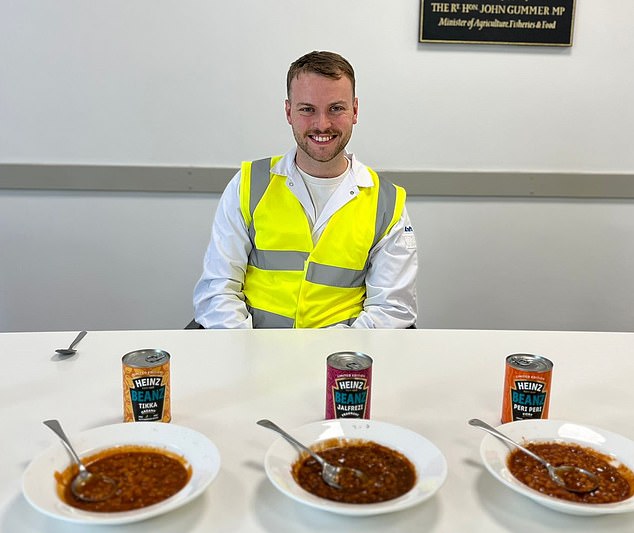What could be more British than baked beans?
It turns out, lots of things. While the iconic orange foodstuff is ubiquitous to us Britons, beans actually originate from North America, and were only introduced to the country around the turn of the twentieth century.
But, like gin and tea, these foreign beans have become an indelible part of British culture.
So much so, that more than two million cans of baked beans are eaten in the UK every day, piled on top of toast or as part of a full English breakfast.
And, as the slogan goes for many of us, Beanz Meanz Heinz.
To meet such significant demand – Heinz occupies around 70 per cent of the market share for baked beans – requires incredibly extensive manufacturing capacity.
In fact, it requires capacity that is unmatched across Europe. Luckily, that is exactly what Heinz has.

Nation’s favourite? Britons eat more than two million cans of baked beans every single day
In the west side of Wigan, sandwiched between the M6 and Wigan Athletic’s Brick Community Stadium, sits Heinz’s Kitt Green manufacturing plant.
Opened in 1959, the site is the largest canning facility and one of the largest food processing plants in Europe, covering 52 acres.
But what happens inside such a mecca for canned goods?
This is Money headed to Wigan to find out.
The journey of a baked bean
More than three million cans of food are produced at Kitt Green every day.
That is 1.3billion cans every year – every one of which is made on site, as is the contents.
Some 1,200 cans of beans and soups are filled every minute at the factory, 24 hours a day, seven days a week.
Each bean has its own journey, travelling a mile and a half during the cooking process, before eventually reaching the packing plant.
The plant gets through an eye-watering 180 tons of dried navy beans every day.
After blanching, sorting – each bean is scrutinised by laser to remove any that don’t meet specification – and quality control screening, the beans are passed towards through pipes to be combined with tomato sauce in five-ton batches.

Bean there, done that: This is Money’s Harvey Dorset visited the Heinz factory in Wigan
The sauce begins its life in sunny Spain, where Heinz grows tomatoes that eventually arrive in Wigan in the form of one-ton bags of tomato paste.
This paste is diluted, and combined with a secret blend of spices that I watch the operator decant into the batch tank via a small bag.
The spices, Heinz says, arrive in numbered bags that are specifically not labelled. Just three people in the world know the exact recipe.
They wouldn’t tell me what was in the bags, either.
That’s right – the beans are baked in the can
You can see why the recipe is so closely guarded – its been a staple of British diets for decades, and that is unlikely to change any time soon.
The cans are made seperately in the canning plant, which is a whirlwind of automated activity.
Thousands upon thousands of cans move round the plant via conveyor belts, while as coated steel sheets are rolled, cut and sealed at one end, before they head towards the filling station.
The line where the cans are filled and completely sealed for cooking – that’s right, the beans are baked in the can – is located in an entirely separate area of the plant.
Conveyors ferry the cans across an access road between the two.

The dried navy beans are blanched and screened for quality control


On the road: Beans and other foods travel more than 1.5 miles during the production process
Jalfrezi beans, anyone?
It was in 1886, the same year as the first Crufts dog show was held and Arsenal Football Club was formed as Dial Square FC, that Heinz first started selling baked beans at Fortnum & Mason in London.
More than a century later the same beans are still flying off the shelves as a staple part of many people’s diets.
Alessandra de Dreuille, director of meals for Kraft Heinz, Northern Europe, says: ‘Our classic Heinz Beanz have built trust and loyalty with Britons for generations and that’s something we take seriously.’
To stay relevant and popular, though, brands must continually keep on top of consumer desires, and this means constantly working on developing new products.
De Dreuille added: ‘Culinary tastes and preferences are constantly evolving – from how people eat beans, to the occasions where they’re eaten, and even what they’re eaten with (it’s not just toast…)
‘To do this, we get insights from just about everywhere to better understand what consumers want and need in their products.’
In 2023, the brand launched a new series of bean-based products looking to cater to a more adventurous audience, with Tikka, Jalfrezi and Vindaloo beans hit the shelves.
‘We knew that Brits were adding a twist to their Beanz – sometimes with a kick of spice – and curry flavours were incredibly popular.
‘So, we went one step further and did it for them,’ de Dreuille says.
These new products were developed at Heinz’s research and development department at Kitt Green, where I tasted some of the products made onsite.
One sample I tried was Heinz beans with Richmond sausages, launched last year alongside the meat producer.
Last year, Heinz also launched Cheesy Beanz in collaboration with Cathedral City – which de Dreuille says is a favourite topping for Britons’ beans on toast.
However, the original product, she says, is just as important.
She says: ‘It’s our heritage that makes these innovations possible – people know and trust our products, and we take this responsibility seriously when we innovate new tastes and flavours for our loyal fans.’
Gareth Buckley, site capital and infrastructure lead at Kraft Heinz, adds: ‘The heritage of Heinz is deeply rooted in the UK, with generations of families growing up enjoying our products.
‘For many of us, it’s not just about making food; it’s about being part of a legacy that has nourished the country for decades.’

New flavours: Heinz is testing out beans containing everything from curry to cheese






